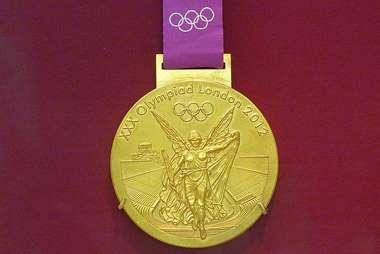July 26, 2016
The gold medal is priceless to those who receive the precious prize. The fact still remains that the medals are manufactured. So what is the actual value of an Olympic gold medal?

Gold Medal Value
July 26, 2016
The gold medal is priceless to those who receive the precious prize. The fact still remains that the medals are manufactured. So what is the actual value of an Olympic gold medal?

Gold Medal Value
The 2016 Rio Olympics will be weighing in at roughly 500g, significantly heavier than and about the same size as the 2012 London Olympics' medals, which were the heaviest and largest summer Olympic medals in history. Previously, the largest summer Olympic medals were from 1992 when Barcelona, Spain hosted the event. The Spain medals had a weight of 231g, were nearly 10mm thick and had a diameter of 70mm. The largest Olympic medals in diameter were the 2006 Turin Olympic medals. They sported a unique design featuring a hole in the center of the medal, similar to the Olympic ring. As a result, the medals were roughly 107mm in diameter.
The International Olympic Committee requires the gold medal to contain a minimum of six grams of gold and roughly 92.5% silver. The composition and value of the medals are as follows:
Gold Medal: 494g Silver, 6g Gold
(494g x $0.63/g) + (6g x $42.40/g) = $311.22 + $254.40 = $565.62
Silver Medal: 500g Silver
500g x $0.63/g = $315
Bronze Medal: 475g Copper, 25g Zinc
(475g x $0.0049/g) + (25g x $0.0022/g) = $2.3275 + $0.055 ≈ $2.38
*Prices obtained July 25th, 2016 via JMBullion and Kitco.
Had all 812 gold medals been made entirely out of gold, with the current market value, they would be valued at: 812 medals x 500g/medal x $42.4.g = $17,214,400.
The last time an Olympic medal was made entirely out of gold was in 1912 at the Stockholm, Sweden summer Olympics. At the time, the average price for one ounce of gold was roughly $18.93 and the weight of the 1912 Stockholm Olympic gold medal was about 24g (0.77 ounces). The cost of a solid gold Olympic medal was approximately $14.58 in 1912. Even adjusting for inflation, it would cost far less than half the cost of the Rio Olympic gold medal.
Why Gold Medals?
Olympic medals have not always been gold. At the first modern Olympic games in 1896, the medals awarded to the first place team were silver and the runner-up received a copper medal. In the next set of summer Olympics in 1900, many of the winners received trophies and cups in place of medals. It was not until 1904 when gold, silver and bronze medals started being awarded to competitors. Each Olympic city hosting the games decides on a unique medal design. The 2016 Rio Olympic medals were designed with sustainability in mind such as recycled materials, laurel wreaths and feature the Greek Goddess of Victory, Nike.
The Bottom Line
The Rio Olympic medals were produced by the Brazilian Mint. The athletes to place first from Aug. 5 to Aug. 21, 2016 will probably feel that the rewards are worth much more than their weight in gold.
Courtesy: Investopedia













































































































